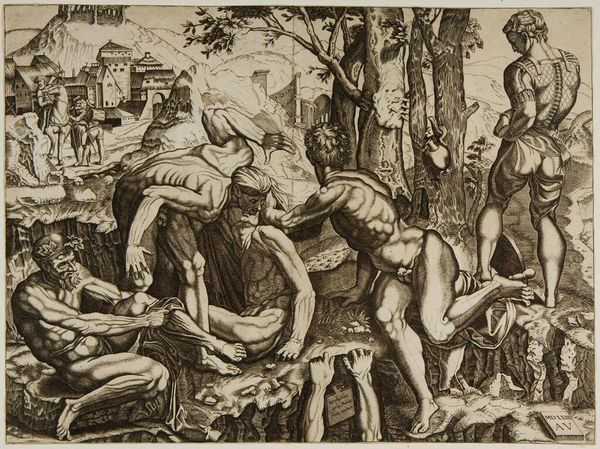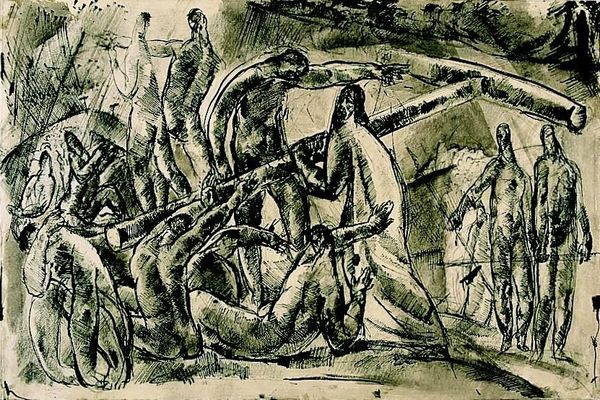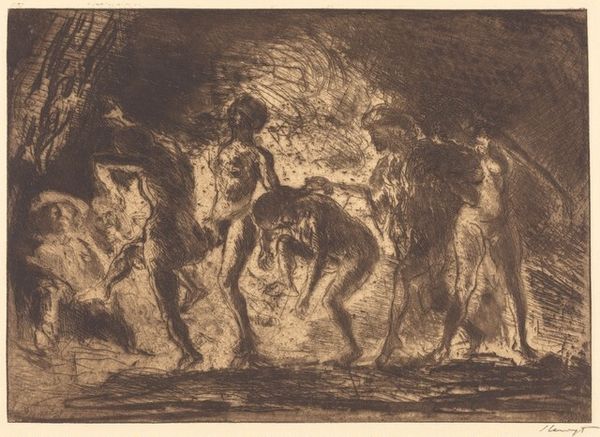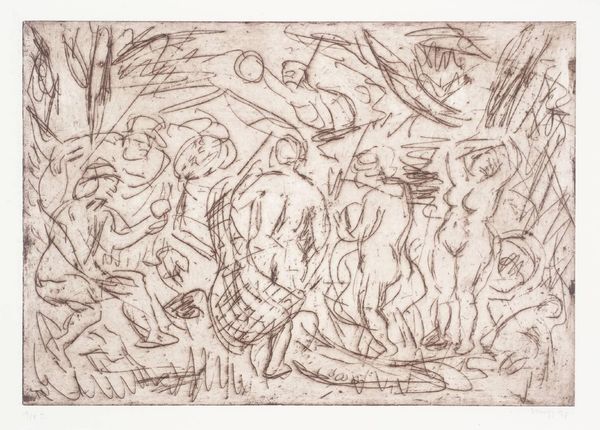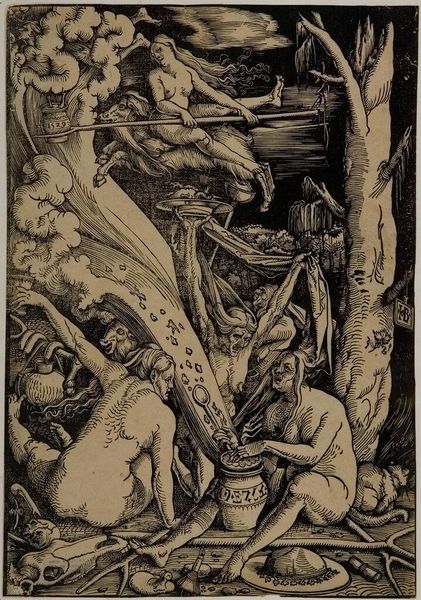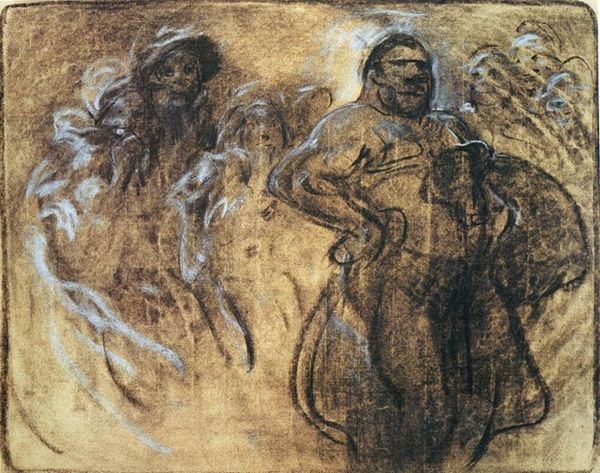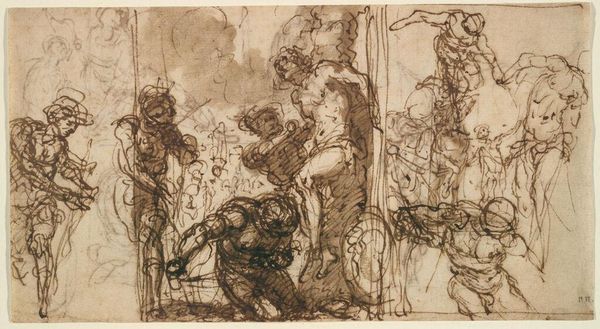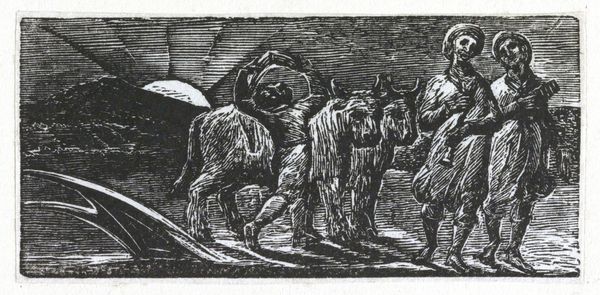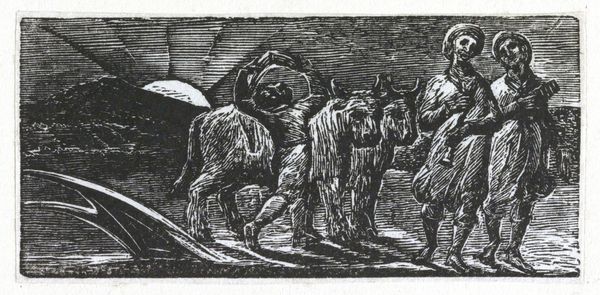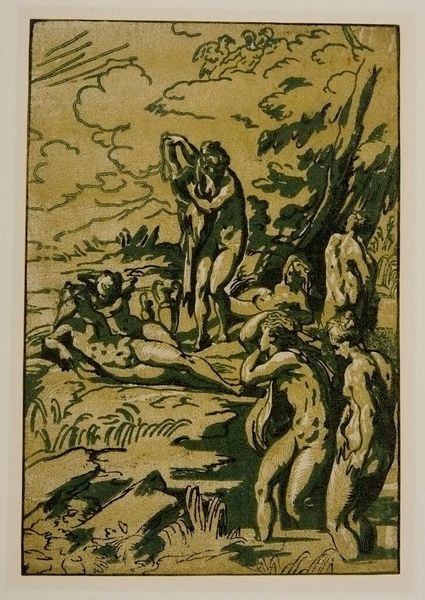
drawing, paper, ink
drawing
ink drawing
ink painting
pen sketch
landscape
flower
paper
ink
plant
post-impressionism
Copyright: Public domain
Editor: We're looking at Van Gogh's "Arums," an ink drawing from 1889. The flowers are elegantly presented but the background seems quite agitated, almost like a storm. What do you see in this piece? Curator: I see a reflection of Van Gogh’s inner turmoil. The arums themselves, traditionally symbols of purity and resurrection, are rendered with stark, almost aggressive lines. Consider the sociopolitical context of the late 19th century – a period rife with societal upheaval and shifting power dynamics. Do you see how Van Gogh uses the delicate flower to question established ideals of beauty and order? Editor: That's interesting! I mostly focused on the swirling lines in the background and the texture of the ink. Curator: And that's valid. Those frantic lines surrounding these symbols of purity evoke a sense of unease and constraint, perhaps mirroring the suffocating societal expectations placed on individuals, especially artists. How might this relate to Van Gogh’s own struggles with mental health and his place within the art world? Editor: It gives the image a more vulnerable feel, as if even symbols of beauty are subjected to suffering. Curator: Exactly! His art was not separate from the lived experience of those around him. How might we read this alongside contemporary debates surrounding access to mental healthcare and artistic expression, particularly for marginalized communities? Editor: That really reframes my understanding. I hadn’t considered the social critique. Curator: Art invites us to examine not only what we see, but also the worlds those images reveal. Thank you, it was enriching to unpack Van Gogh’s symbolism with you. Editor: Thank you. I learned a lot!
Comments
No comments
Be the first to comment and join the conversation on the ultimate creative platform.
